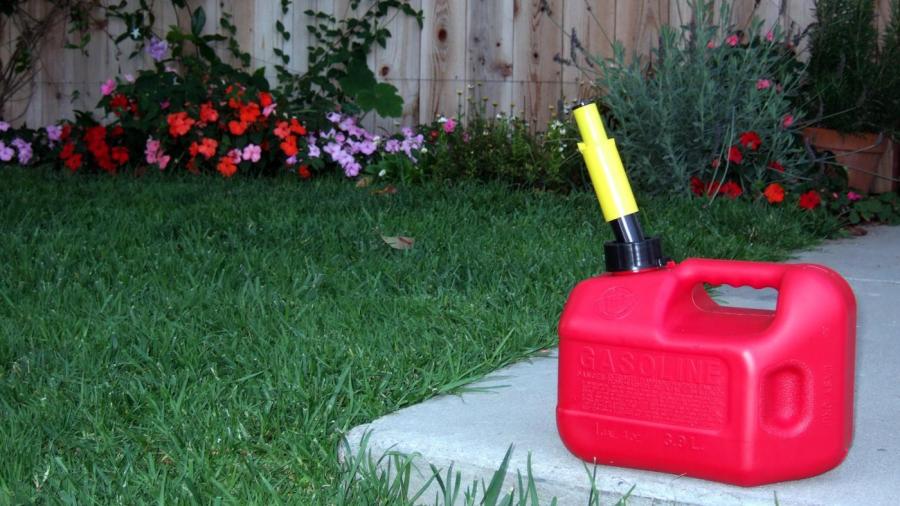How Do You Clean Gasoline Off Concrete?

Gasoline can be effectively cleaned off of concrete with kitty litter to remove any excess oil still sitting on the surface, as well as a grease-cutting dish detergent to remove the stain. Kitty litter is made with an absorbent clay that soaks up liquids well. Stubborn or old gasoline stains may need more powerful products, such as trisodium phosphate, to completely remove them. You also need a broom, scrub brush, absorbent rags and cleaning gloves.
-
Pour kitty litter over fresh gasoline spills
Pour fresh kitty litter over gasoline still sitting on the surface of the concrete. Use a broom or the shoes on your feet to grind the kitty litter into the oil for maximum absorption. Allow it to sit for a few hours. Sweep up and dispose of the kitty litter in a container suitable for safely throwing away hazardous materials.
-
Apply dish detergent to gasoline stains
Squirt a powerful, grease-cutting dish detergent over any remaining gasoline stains that have soaked into the concrete. Scrub dish detergent into the gasoline stains vigorously with a stiff scrub brush.
-
Rinse, blot and repeat
Rinse away the detergent with boiling hot water, then blot dry as much as possible with an absorbent terry cloth rag. Repeat scrubbing, rinsing and blotting several times to remove all or as much of the gasoline stains as possible.
-
Scrub tough gasoline stains with trisodium phosphate
Combine an ounce of trisodium phosphate (TSP) with a cup of water and enough powdered talc to make a creamy paste. Spread the mixture over the gasoline stain and let it dry for 24 hours. Scrape up the dried paste after 24 hours with a metal spatula and scrub the area with water and a stiff scrub brush, then rinse off the area. You may need to repeat this process two or three times to completely remove very tough stains. TSP is harmful to the skin — make sure to wear protective cleaning gloves when you use it.





